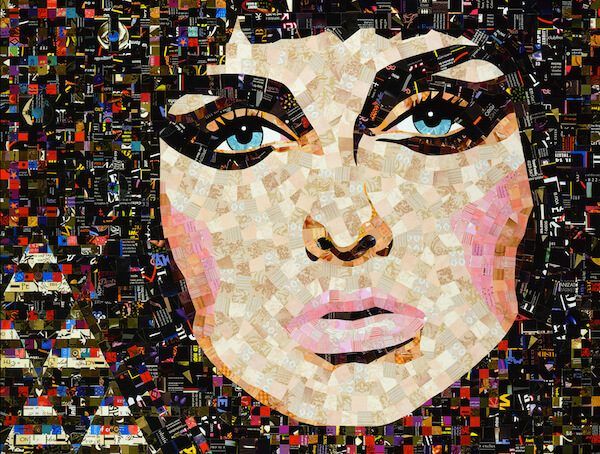
“Klio,” 2009, antique wallpaper, greeting cards and junk mail, 30″x40″, from the “Beautiful Women” series. All images copyright and used with permission of Schimmel Art.
However it is framed, the idea is nothing short of inspired. Look at the pieces from a distance and each face practically leaps off the canvas, alive with emotion. Zoom in and the technique behind the mosaic-like portraits comes to the fore. From whichever sphere of culture the person depicted is derived, the materials that bind their different expressions together become apparent: Each portrait has been made almost entirely from junk mail and other paper-based detritus. In an age where the CO2 emissions and loss of habitat that stem from ad mail are real causes for concern, this is upcycling as it should be done — reusing what would otherwise go to waste to create objects of beauty that we can admire and collect.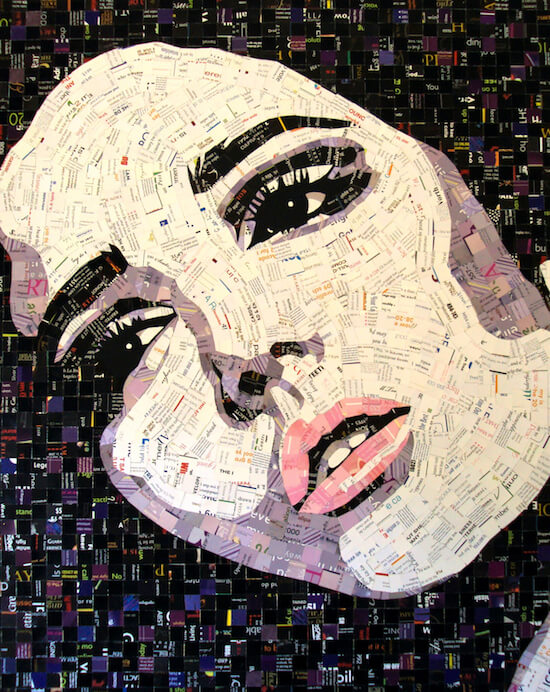
“Tosca,” 2009, junk mail, 24″x30″, from the “Angels & Icons” series
While marketing clutter sent through the post is becoming increasingly obsolete — eclipsed by its email equivalent in spam — everybody is surely still familiar with the experience of receiving junk mail. Granted, it’s a largely forgettable one: you sort out the letters that actually have some significance in your life and the rest goes in the paper recycling pile (or, if your head’s not screwed on right, gets dumped in the trash). For artist Sandhi Schimmel Gold, this routine is all but alien. Rather than seeing this paper waste as being destined for landfill or even as stuff to be more sensibly discarded, Schimmel Gold views it as material to be stockpiled, forming as it does the very fabric of her experimental forays in fine art.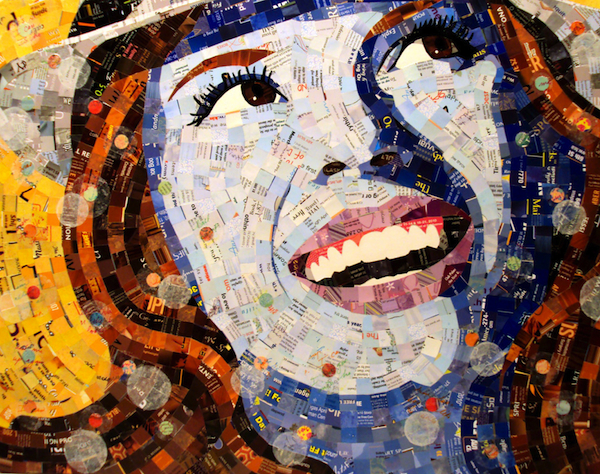
“Dear Diary,” 2010, junk mail, acrylic, ink and tissue, 22″x28″, “Emotional Influences” collection, inspired by “I Can Hear the Bells” from Hairspray.
The Arizona-based artist creates her vibrantly colored portraits by cutting up the images and text that arrive through the mail, then rearranging the segments and pasting them together to sculpt the pop art-esque portraits before you. What’s more, it’s not only junk mail that Schimmel Gold imbues with a new lease of life: greetings cards, advertising brochures, postcards, packaging, business cards, tax forms, political mailouts, labels, calendars, wallpaper, photographs and menus have all come into play in her work — cut up and cast into something totally different over weeks if not months by her meticulous and skillful hand. From the vapid sheen or dull luster of such paper is born the beginnings of a piece of art, conceived by the artist’s imagination.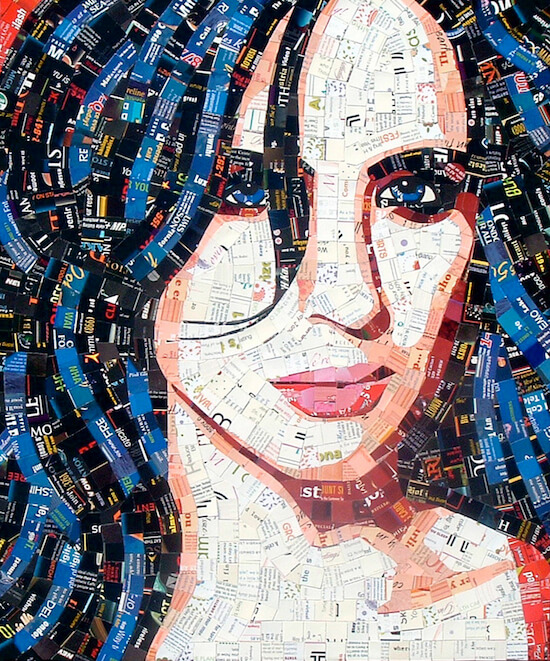
“Czarina Abole,” 2008, junk mail, 20″x24″, “Beautiful Women Portraits”
Neither is Schimmel Gold’s desire to recycle limited to the content of her pieces. As she told 1-800-RECYCLING in an interview: “I also reuse canvas, board, frames, etc. even from yard sales and thrift stores… All of the paints, adhesives, lacquers and other materials I use are acid-free, water based and nontoxic.” Commendable, to be sure, but it is the hand-crafted portraits themselves that catch the eye. The thousands of disparate slips of paper debris take on a new dimension as iconic, typically female, facial representations — the physically overlapping layers of the medium suggestive of the different layers of meaning the artworks acquire (despite the way that images often seem stripped of meaning, so reproduced are they in contemporary culture).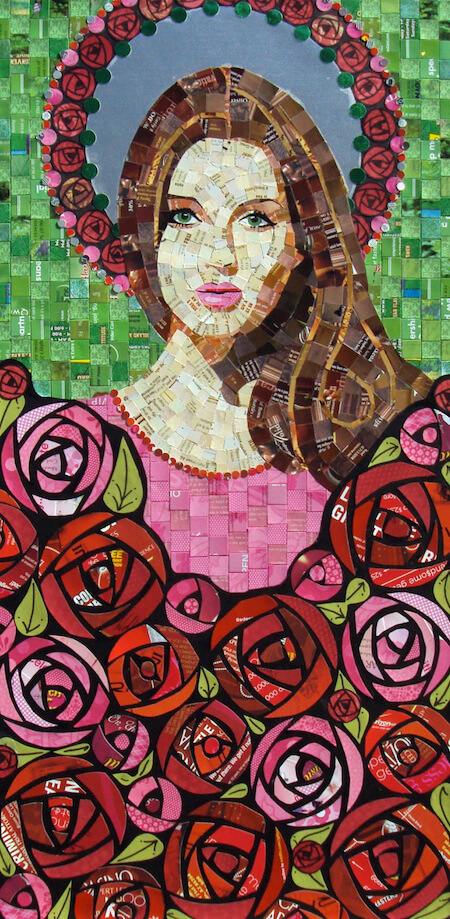
“Flora, Madonna of the Roses,” 2009, junk mail, 18″x36″, from the “Angels and Icons” series
Schimmel Gold’s muses are manifold. “I have a never-ending stream of inspiration,” she explained. “History, fashion, music and travel are probably the most prevalent. I might be inspired by a book, a place, a song, a couture collection. I spend time in libraries and museums, so you’ll see a piece inspired by Art Nouveau architecture, another from Maria Callas performing ‘Ave Maria,’ or the myth of the Minotaur.” It is the sometimes intangible seeds and substance of Sandhi’s work that come first for the artist — even before the idea of art and sustainability going hand in hand (a legacy that goes back longer than we might tend to believe, to the very first natural paints smeared onto the walls of caves).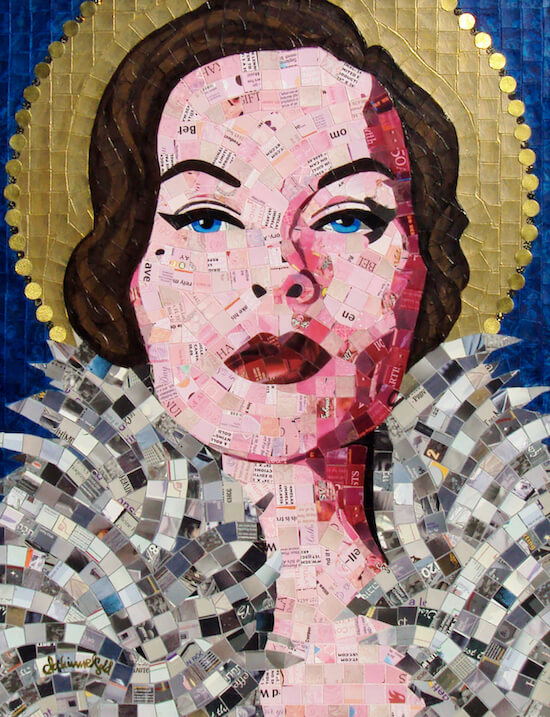
“Fashion Icon,” 2008, junk mail, 24″x20″, from the “Angels and Icons” series
As Schimmel Gold has said: “Artists have always used whatever materials were available. I’ve always saved everything I might use in my work. Why not reuse or repurpose materials to create art? Sustainability is part of my nature.” So too is an instinct for art. As she explains on her website, Schimmel Gold learned to mix paints and play the piano before she could write her name or read music. She spent her childhood quietly drawing in her bedroom and later skipped school to spend time in New York City’s many museums and art galleries. Though highly educated, her love of learning has not been restricted to academia, and mosaic studies and workshops in Europe provided grounding for her own largely self-taught artistic innovation.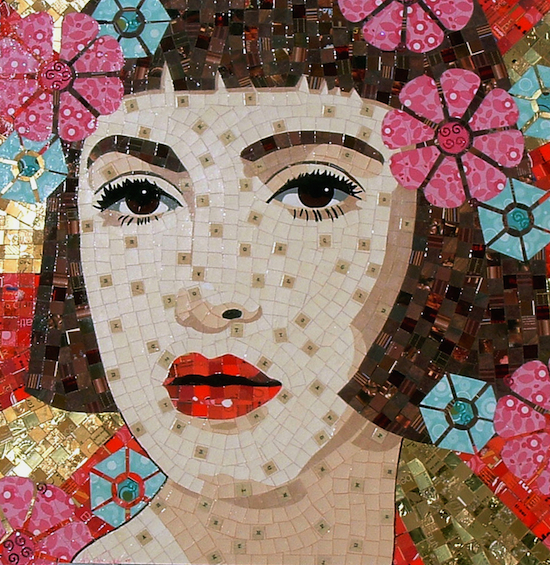
“Cherry Blossom,” 2008, junk mail, 30″x30″, “Beautiful Women Portraits”
Innovation is the word. From a recycling perspective, it’s as if the idea has been staring us in the face all along; and yet it was the artist from Arizona who had the vision to turn it into a reality. There is scarcely a more glaring waste of paper than junk mail — 44% of which, estimates the EPA, is disposed of without being opened or even read, and only 32% of which is actually recycled. In the work of Schimmel Gold, we are left with the sense that pieces of paper that were previously a burden — on people and on the environment — are reborn as anything but. They are transformed into objects individuals desire to own; objects that more than save face for the idea of sustainably minded art.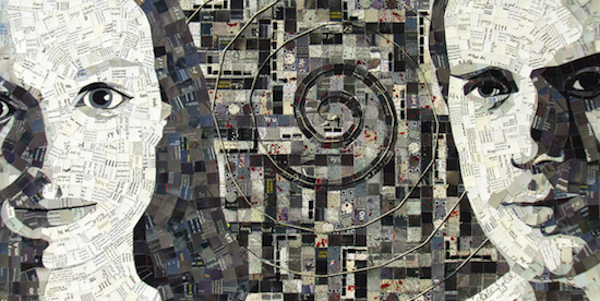
“Ariadne’s Clue,” 2009, junk mail, photographs & string, 18″x36″, from the “Angels and Icons” collection
Before learning elements of her craft in Italy, Turkey and Cyprus, Schimmel Gold studied psychology and fine art at Arizona State University. She also undertook graduate studies in textile and surface design at ASU and fine art at UCLA, and furthered her studies at New School – NYC. After starting a career designing consumer goods such as fashion and accessories, she made a name for herself in retail display design, creating work for Levi Strauss & Co. among others. However, the artist who claims to have “eidetic imagery [or] something like a photographic memory” was always painting, and has since exhibited her mosaic fusion work widely across the U.S. — mainly portraits but also landscapes and fantasy. Other sources: 1, 2, 3